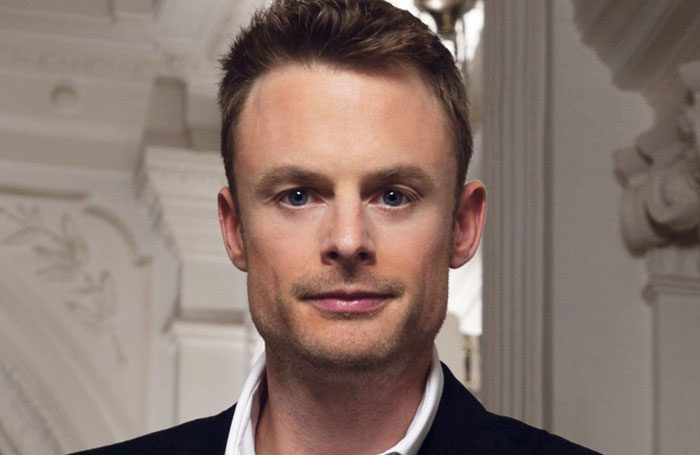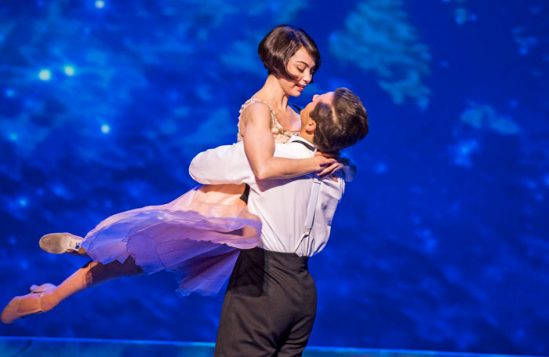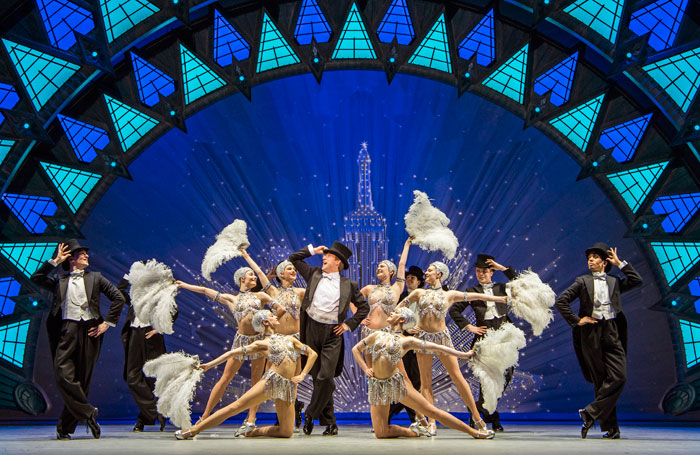Interview: Christopher Wheeldon Talks AN AMERICAN IN PARIS in Movie Theaters

Photo by Angela Sterling.
Taped during the 2017 London engagement, the Christopher Wheeldon directed and choreographed Tony-winning musical AN AMERICAN IN PARIS comes to movie theaters in the United States on September 20 and 23. The live capture, distributed by Trafalgar Releasing, features the original Broadway stars Robert Fairchild and Leanne Cope reprising their roles in the critically acclaimed musical, which is inspired by the Oscar-winning 1951 MGM film of the same title. To get the scoop on the musical and the film, we chatted with Wheeldon about it.
Take me back to the very beginning of AN AMERICAN IN PARIS, and deciding to do this show. What was it like getting to start building this based on the iconic dances in the film?
I mean, listen, when we sat down as a creative team at the beginning of this process, we made a very conscious decision to sort of not really try to recreate the film in any way because it is so iconic and so beloved. There were things we were also interested in talking about in our stage production that they couldn't really talk about back then. It [the film] was so close to the end of the war. And, we felt like we could potentially be a bit more truthful, or at least plate it in a more realistic historical context. And, as far as the dances were concerned, I knew pretty much from the get-go that the way I would approach the dances would be very different from Gene Kelly. I loved the ballet in the movie, but it's very much a piece that is made specifically for camera. We wanted to Take That big ballet and place it a little bit more within the context of our story, so that it was the kind of culmination, in a way, of our two lead character's relationship.

Photo by Tristram Kenton.
I like that you bring up the idea of the second act ballet being a representation of culmination. It is definitely the big moment in the stage version, and I feel like the dances progressively grow as you head towards that moment. Every dance moment feels bigger than the one before it. Can you talk to me about that decision?
Actually, yes. I think you're absolutely right. It kind of happened in a sort of natural evolution of the piece. Leading towards the emotional culmination of all the characters, you look at Henri's (Haydn Oakley) moment in the second act in "Stairway to Paradise," it's kind of the biggest Broadway-style number in the show, and it's also the climax of his particular story. That dictated the sort of grandeur and the emotional impact of those dances in the second act. Like any good show, act two needs to be better than act one. [Laughs] Of course, you want them both good, but you want act two to have the most impact. So, that was certainly in the back of our minds when we were putting it all together.
You've done both traditional ballet and dance for Broadway / musical theater. What do you, as a choreographer, find separates the two? Or, are they more alike than we, as audience members, think?
I think they're very much more alike than you think. I mean, I make a lot of narrative ballet - more so perhaps in the United Kingdom than here. In the end, it's about communicating. It's about communicating through movement a clear story line, a clear emotion. So, even though they might look different stylistically, the intention is usually always the same. It's just about finding the right steps within the context of the show to communicate those different emotions.
Also, this isn't the first time that one of your works has been filmed for cinemas around the world. What is it like getting the cameras in versus having that traditional proscenium view?
I love it because you get to actually focus the audience's attention. A show like AN AMERICAN IN PARIS is quite sprawling when you see it live. It's very layered. There's a lot of detail. It's very hard to, in some cases, know where to focus your attention because there's a lot going on, and it's visually very rich. The wonderful thing about the camera is that you can be very specific about where you want your audience to look. So, I think in the case of AN AMERICAN IN PARIS the movie, the storytelling is even clearer from looking through the camera.

AN AMERICAN IN PARIS.
Photo by Tristram Kenton.
Of course, you still have to balance out how do you still represent the dynamics of the show and the excitement of the big scenes, so that becomes a challenge. But, I've worked a lot with the director, Ross McGiven. He's the one who films most of my work at The Royal Ballet. He did the DVD of ALICE'S ADVENTURES IN WONDERLAND DVD, the DVD of THE WINTER'S TALE, and others. He really knows how to capture my work, and when the opportunity came to film AN AMERICAN IN PARIS, it just seemed right that we work together.
I think he's done an absolutely beautiful job with it. It feels more like a motion picture than a proscenium shot sort of capture. And, I think a lot of that is because his editing and the camera work is beautiful. But, also, just the visual language of the show - because already there's kind of a lot of projected animation within the design - feels like a live-action animated movie. Like a live-action dance movie, which is great.
I remember sitting in the balcony of The Palace Theater on Broadway and taking it all in. I was blown away by the multimedia aspects, so that must be cool to see on film.
Yeah, it's really beautiful on camera, actually. They captured that really well. You always worry that they lose some of that, but it certainly comes across very clearly in the film.

Photo by Tristram Kenton.
Is there anything that you had to rework just for the cameras?
We did have the luxury of having a pickup day where we could get in there with a steady cam and help the audience get into the action a little bit more. I think that's one thing Ross has been very clever at editing in. Some of those moments help make it feel really dimensional. So, yes and no. The majority of the shots come from the front and come from live performance. Then, he had few ideas of a few places he'd like get in on, so we did those on the pickup day without an audience in the house.
These films are a great way to preserve a piece and to broaden the audience. Is there anything beyond those two elements that you, as an artist, really appreciate about these films being made.
I think it's just another window into the material. Like I said before, it's always very rewarding for me to be able to kind of show the audience the things I really want them to see within the piece - to guide the eye and sort of focus the attention on dramatic beats that perhaps you might miss if you were seeing it in the theater and your attention was sort of drawn elsewhere.
But, I think the two things you mention are huge: the fact that we get to preserve it, the fact that we get to capture Leanne Cope and Robbie Fairchild [Robert Fairchild], and their performances that had become so nuance and beautiful here in London. They were both wonderful at The Palace, but they had a break, we came back to it, we had another rehearsal period together, and we got in there deeper. Their skills developed as actors, and my skill, I guess, developed as a director. So, I think we caught the very best version of them for this film.
That's obviously a huge luxury to have been able to capture that, and then taking dance out into the world for people who didn't have the chance to come out to New York or go to London to see the production. This can be seen all over America, and hopefully, we'll capture the imaginations of kids, of new audience members who might then be inspired to see a live production and/or a ballet. That's the beauty of this show. It's a great kind of audience development tool for the ballet and for Broadway.
For more information about and tickets to Trafalgar Releasing's screenings of AN AMERICAN IN PARIS in U.S. movie theaters, please visit https://anamericaninpariscinema.com/.

Videos


